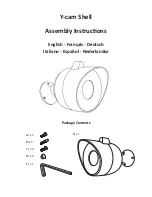
Page 25
Optical Charts
thermoIMAGER TIM
Geometric resolution for ideal temperature measurement
When designing optics for measuring IR cameras, special attention must be paid to the quality of detail
contrast with which an object can be represented in the image. This is described by the modulation transfer
function (MTF). Since in contrast to visual cameras, with IR cameras the thermal contrast is of more interest,
this is used together with the slit response function (SRF). The result is determined by the number of pixels
an object needs to fill to allow its temperature be to be measured exactly. In high-performance infrared optical
systems, this is 3×3 pixels, with lower quality optical systems, in some circumstances as many as 10×10
pixels may be required, to receive 90% of the energy. A high-performance camera lens also allows a larger
measuring distance with the same number of pixels of the detector, or the precise temperature measure-
ment of smaller structures and objects. The 3×3 pixel geometry is described as MFOV (measurement field of
view) - one single pixel on the object surface is described as IFOV (instantaneous field of view). The MFOV is
comparable with the measuring spot definition with infrared thermometers.
The following tables with examples showing what spot sizes and pixel sizes will be reached in which distance.
For individual configuration there are different lenses available. Wide angle lenses have a radial distortion due
to their large opening angle; the software TIM Connect has an algorithm which corrects this distortion.
















































